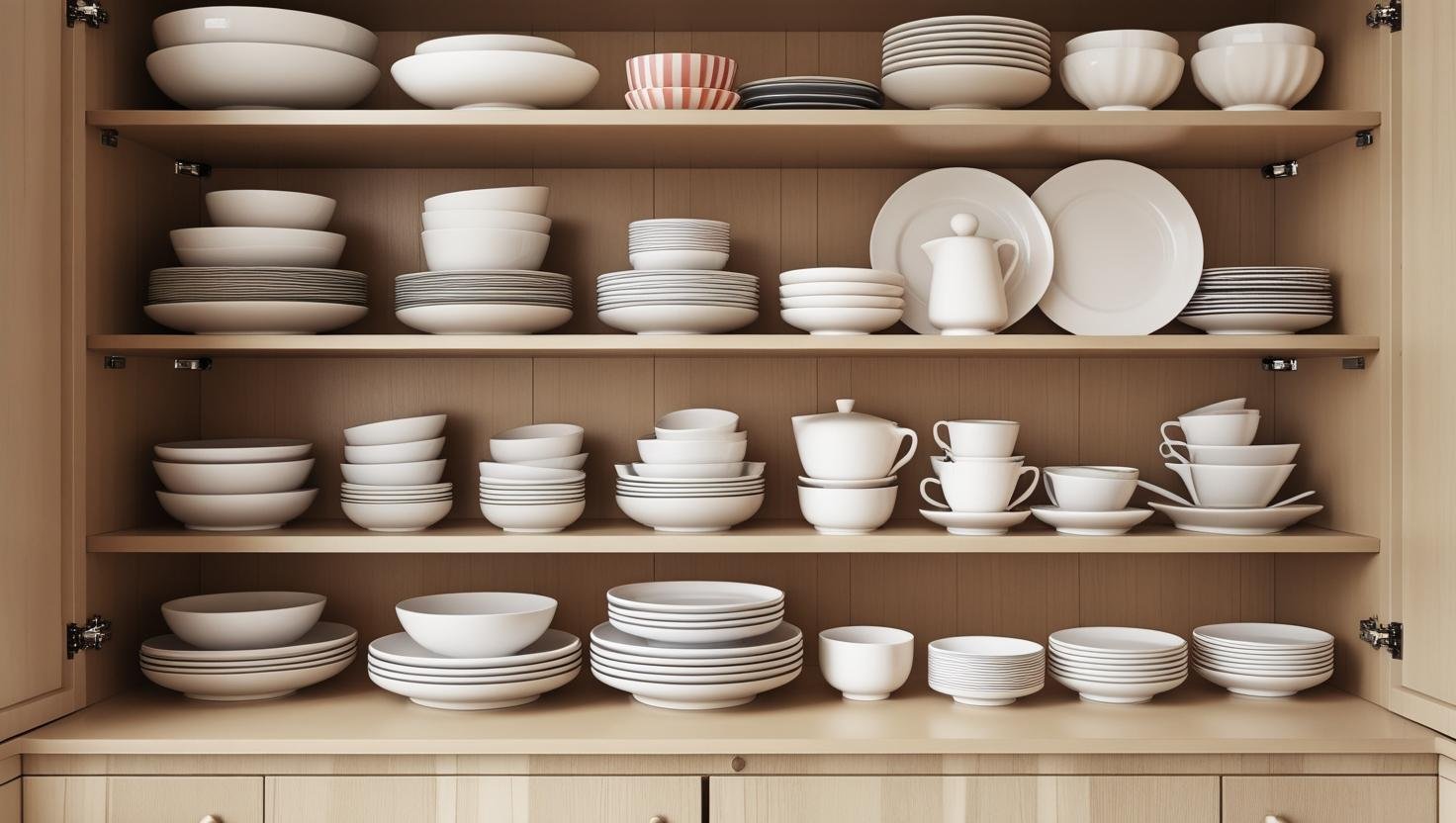Standing in front of a pile of dishes in the sink, you might let out a sigh. But the cause of that fatigue may not be laziness—it might be how your dishes are organized. The number, type, and placement of your plates and bowls can affect not just how your kitchen looks, but how you feel about cleaning it.
TAIST introduces dish organization principles that go beyond storage—they are about restoring order and ease to your life. With just a few thoughtful adjustments, your kitchen can become a place of calm, not chaos.
Group by Type and Height for Visual Harmony
The golden rule of organizing: group similar items together. Rice bowls with rice bowls, plates with plates, cups with cups. Try to match size and shape wherever possible. Mixed sizes and styles make stacking difficult and retrieval inconvenient, so choosing uniform sets, especially for everyday use, simplifies everything.
Bowls and plates of consistent height make more efficient use of cabinet space and give a sense of visual order. Less-used or irregularly shaped pieces can go toward the back or higher up, keeping daily-use items within reach.
What You Use Often Goes Where You Can Reach
Daily essentials like rice bowls, soup bowls, and medium-sized plates should be stored at eye or hand level. Less frequently used items—guest teacups, dessert plates—can be stored on upper shelves or deeper in cabinets.
If daily dishes are hard to access, they’ll likely pile up in the sink instead. The core principle of dish organization is simple: “easy to take out, easy to put away.”
Maximize Small Spaces with Smart Inserts
Even in narrow cabinets, there’s often hidden space. Use tiered racks or mini-shelves to double the usable height and keep you from having to lift an entire stack just to get to one dish.
Plate racks, cup trays, and drawer-style inserts are widely available and help improve access without remodeling your cabinets. Think in layers, not just lines—use your cabinet space in three dimensions.
Fewer Dishes, Fewer Decisions
That mismatched mug, the chipped saucer, the dinner plates that haven’t been used in years—these are all silent sources of stress. Letting go of dishes you don’t love or use lightens not just your cabinets, but your mind.
Keeping only what you need isn’t just about minimalism. It’s a practical, energy-saving decision that protects your daily rhythm. Dish organization becomes a small but powerful act of self-care.
Let Your Layout Follow the Dishwashing Flow
Place dishes not just where they look nice, but where they make post-dinner cleanup easy. If you use a dishwasher, store dishes nearby. If you wash by hand, keep dishes close to the sink for a shorter, simpler flow.
The less effort it takes to put things away, the more likely you are to stay tidy. A well-organized kitchen isn’t just clean—it’s thoughtfully connected by a smooth, intuitive routine.
Plates and Cups as Part of the Décor
Even everyday dishes can elevate your kitchen’s atmosphere if arranged with care. Match colors, line up handles in the same direction, stack plates by size—these details turn storage into display.
Don’t think of storage as hiding. Think of it as curating. A neatly arranged row of cups or a shelf of color-coordinated bowls adds character and grace to your space.
Three Meals a Day Start with a Bowl
At the heart of every meal is the dish you eat from. The type of bowl or plate you reach for, and the ease with which you access it, subtly shapes how your day unfolds. A disorganized kitchen can slow you down; an orderly one energizes you.
Open your cabinets today. Are the piles of dishes part of your fatigue? Is the stress of daily dishwashing rooted in your storage system? You may find that organizing your dishes is all it takes to transform your routine.
